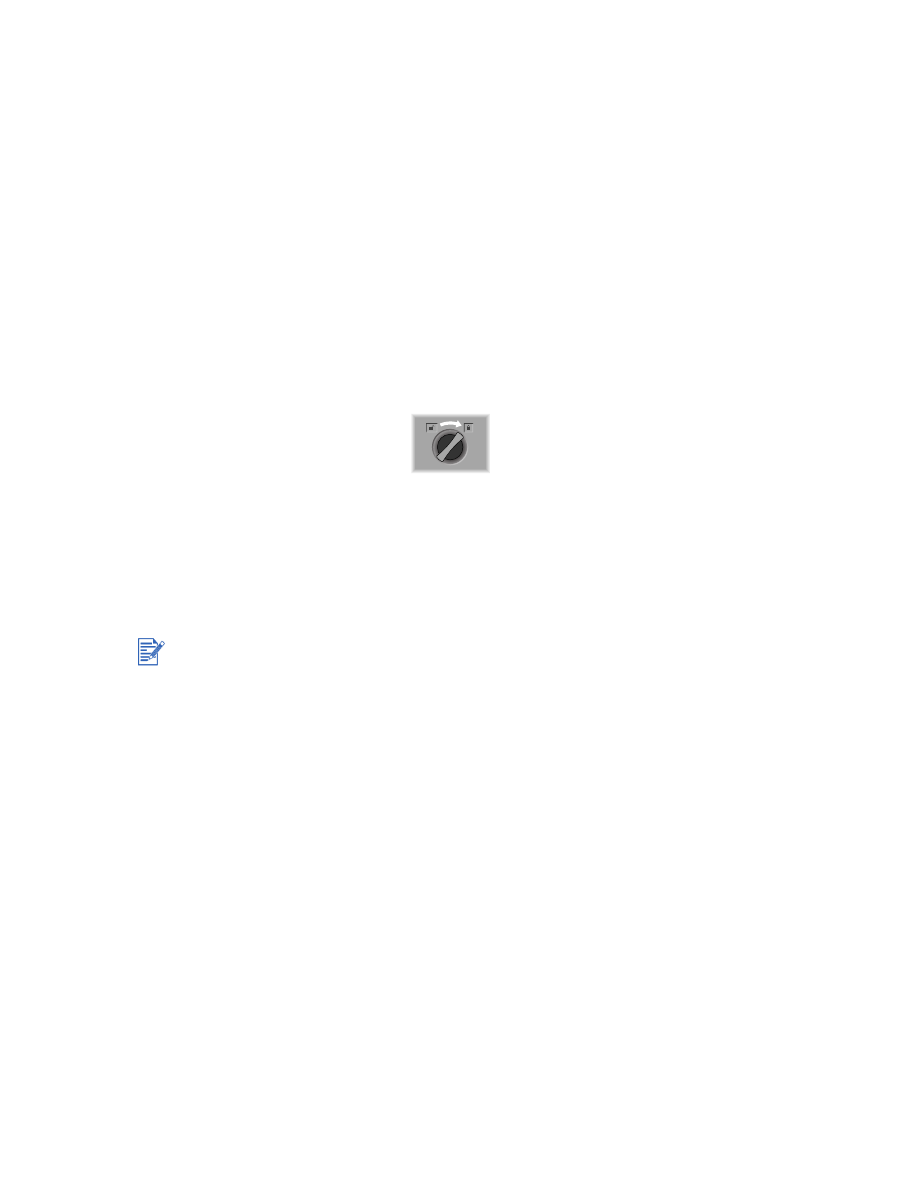
Printer is not responding (nothing prints)
Check the power.
Make sure the power cord is connected firmly to the printer and to a working outlet, and
that the printer is turned on. The Power light on the front panel of the printer should be lit.
Check the cables.
Make sure the printer cable is firmly connected between the printer and the computer.
Check the rear panel knob.
Make sure the rear panel is correctly installed and the knob is in the lock position. The
printer will not function until the knob is in the lock position.
Check the printer setup.
Make sure your HP deskjet printer is selected as the current or default printer and that
Pause Printing
is not selected in the Printer menu.
Be patient.
Complex documents containing many fonts, graphics, and/or color photos take longer to
begin printing. If the Power light is blinking, the printer is processing information.
Check the paper.
Make sure paper is loaded correctly in the tray and that the paper is not jammed in the
printer. See
“Loading paper”
and
“Paper is jammed in the printer”
for more information.
Check the print cartridges.
Make sure that both the black and color print cartridges are properly installed and that the
access cover of the printer is closed (see
“Replacing the print cartridges”
for more
information). The Print Cartridge light flashes if the print cartridges are not installed
correctly. See
“Printer lights blink”
and
“Print cartridge problem”
for more information.
If you tried to print when the printer was turned off, you should have seen an alert message on
your screen. If the printer was off and you did not see a message when you tried to print, the
printer setup might be incorrect. To correct this, reinstall the printer software.

ENWW
5-2
Try printing a sample page.
Turn the printer off, and then back on. Press the Resume button and release it when the
Resume light starts to blink. If the sample page prints, then the problem is not with the
printer.
Try printing from another application.
Try printing from other applications to see if this problem recurs.
Try printing a test page.
Print a generic Windows test page: Click
Start
, point to
Settings
, and then click
Printers
(Windows NT 4.0, 98, Me, and 2000) or
Printers and Faxes
(Windows XP). Right-click
the printer icon and select
Properties
. Click the
General
tab, and then click
Print Test
Page
.
If the test page prints and the printer previously worked with the same software program
you are using, try printing another file using the software. If this file prints, the file you were
previously trying to print might be damaged. If you have a backup copy of the file, try
printing it. If none of the above solutions worked, this problem is likely caused by your
software program's inability to properly interpret print settings. Check the readme file on
the Starter CD for known software conflicts. Otherwise, check your software program
manual, or call the software manufacturer to get more specific help for this problem.
If the test page does not print, ensure that the correct port (USB, LPTx) is selected and
that the printer is connected directly to your computer. If your printer is connected to a
switch box, make sure that you have selected the correct switch. When printing the test
page, the printer Power light should flash. If your Power light does not flash, print a
diagnostic page. See
“Printing a diagnostic page”
for instructions.
Check the network setup.
Make sure that your printer is properly set up in your network environment. See
“Using the
printer on a network”
and the documentation provided by your network vendors. Also see
“Network printing problem”
for additional troubleshooting information.
Check the Chooser (Mac OS 8.6 and 9.x only).
Make sure you have installed the printer software and the printer is selected. The printer
version should be visible on the left panel of the Chooser. When you click the printer icon,
the printer name should be available on the right panel of the Chooser. Select the printer’s
name.
Check the USB port.
Unplug the printer from the USB port, wait a few seconds, then plug it back in. If that does
not help, try plugging the printer into another USB port.
Check the condition of the cable.
Make sure the cable to your printer is not damaged or frayed. If it is, contact the
manufacturer of the cable and have it replaced.
Uninstall the printer software and run the setup program again. Ensure that you turn on
the printer's power and connect only the cable you have selected during installation when
prompted to do so.